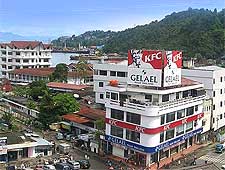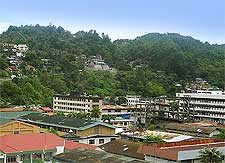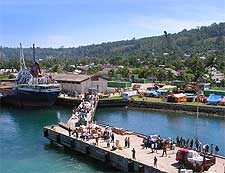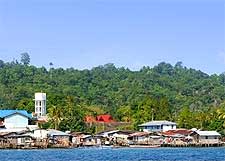Papua History Facts and Timeline
(Papua, Indonesia)

Indonesia's biggest and easternmost province is sometimes confused with its neighbours, the newly formed province of West Papua to its west and the separate country of Papua New Guinea to its east.
Although often in the news for the wrong reasons, the province has much to offer its visitors, who will be sure to encounter many wonderful attractions during their stay. These will likely include the world's biggest butterflies, longest lizards, tallest tropical trees and some of the highest mountains, between the Andes and Himalayas.
Earliest Settlers
Papua's original inhabitants hunted and gathered throughout the island for at least 40,000 years, but by 4000 BC, the island's well developed agricultural system attracted migrants from as far as present-day Taiwan and southern
China. Little else is known about local culture or history prior to the early 16th century, when Portuguese explorers became the first Europeans to lay eyes on the island.

European Exploration
Although Portuguese, Spanish, German, and English explorers all set sail for Papua during the 16th century, none of them stayed on the island long enough to establish permanent settlements. A Spanish explorer named Ynigo Ortiz de Retez named the area 'Nueva Guinea' because of its similarity to Africa's Guinea region, but few people realised that the area was actually an island until about a century later.
Papua, like most other islands in Indonesia, eventually fell under the Dutch East India Company's control, but the company had little interest in the island after finding no gold or spices. It was a British naval officer, John Hayes, who attempted New Guinea's first permanent European settlement, which failed after encounters with deadly diseases and hostile locals.
History of the Division of New Guinea
The 1824 Treaty of London established most of Indonesia's modern boundaries, with the British claiming Singapore, Malaya and an interest in North Borneo, while the Dutch claimed most of the islands now belonging to Indonesia. The island's eastern half, divided between British and German rule, eventually became the independent nation of Papua New Guinea. Much of the island's interior, including the Baliem Valley, remained undiscovered until well into the 20th century.

The Arrival of WWII
Apart from a brief period as a prison site for convicted Communists during the 1920s, Papua was a relatively peaceful place until the 1941 Japanese invasion of South-East Asian territories. The island became a WWII battlefield where more than 4,000 Australians and Americans, and some 13,000 Japanese, tragically lost their lives.
Indonesian Territory
Although history remembers Indonesia becoming independent in 1950, present-day Papua remained a Dutch territory until 1961, but many residents preferred to form their own country instead of joining Indonesia. After Papua became part of the larger island archipelago, the West Papuan national anthem and flag were banned, along with political parties or organisations promoting West Papuan independence. Suharto changed the province's name to Irian Jaya after becoming Indonesia's president in 1967.

Present-Day
In 2000, Indonesian President Abdurrahman Wahid changed Irian Jaya's name back to Papua, although he discouraged Papuan independence, and a separate province called West Papua was formed on the island's westernmost section in 2003. Although the Free Papua Movement remains active throughout the province, their demonstrations have been violently suppressed and their targets are Indonesian security or mining employees, not tourists.
The towering limestone Puncak Jaya mountain, Oceania's highest peak, serves as the centrepiece of the UNESCO World Heritage Site of Lorentz National Park, whose area between the central mountains and the south-west coast is the biggest protected land mass in the entire Asia-Pacific region.
 Indonesia's biggest and easternmost province is sometimes confused with its neighbours, the newly formed province of West Papua to its west and the separate country of Papua New Guinea to its east.
Indonesia's biggest and easternmost province is sometimes confused with its neighbours, the newly formed province of West Papua to its west and the separate country of Papua New Guinea to its east.

